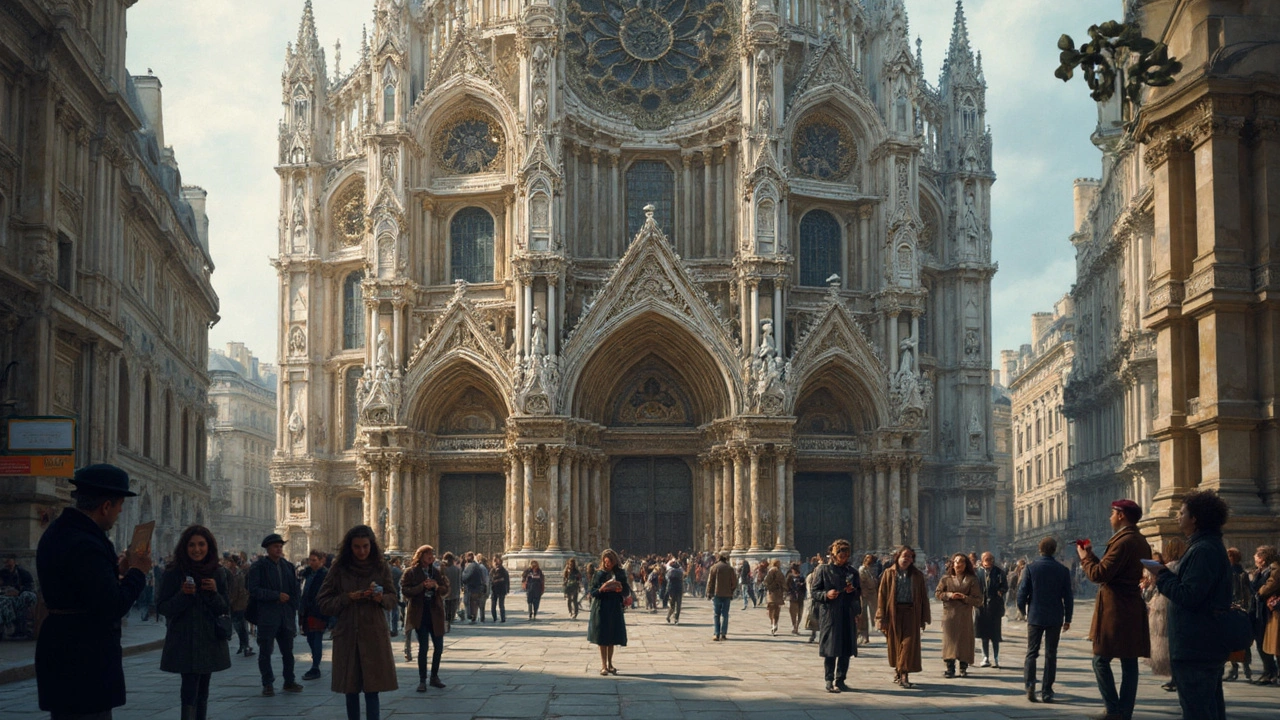Baroque style: how to spot it and use it today
Baroque style loves drama — buildings and rooms made to grab your attention. It grew in the 1600s as a louder, more emotional follow-up to classical order. Think big movement, strong light and shadow, and ornament that seems to flow like motion frozen in stone. If you walk into a room and feel swept up, that’s Baroque working its magic.
Key features to spot
First, look for curves everywhere. Columns bulge, facades sweep, and ceilings bend into oval or elliptical domes. Second, notice contrast and theatrical lighting. Deep recesses next to bright reliefs create a stage effect. Third, expect rich decoration: carved scrolls, garlands, cherubs, and layered moldings stacked like a cake. Fourth, materials and finishes are dramatic — gilding, marble veneers, and bold color palettes show wealth and power.
Baroque also plays with scale. Small details repeat at different sizes so your eye moves across the space. Architects used forced perspective and sweeping staircases to guide movement. Inside churches, altarpieces and frescoes often reach into the viewer’s space, blurring the line between structure and art.
Where you’ll see Baroque and why it still matters
Look for Baroque in European churches, royal palaces, and old theaters. Cities like Rome, Vienna, and parts of Spain and Latin America have strong Baroque legacies. Even when buildings aren’t fully Baroque, you’ll spot its fingerprints: dramatic staircases, ornate cornices, and theatrical interior lighting. Modern civic buildings sometimes borrow those bold gestures to convey authority and spectacle.
Baroque matters because it taught designers how to shape emotion through space. Contemporary interiors and public buildings borrow its drama to create memorable moments — a grand lobby, a museum gallery that feels cinematic, or a hotel entrance that builds expectation. Those ideas influence photography, film sets, and stage design too.
Want to bring Baroque energy into a modern home without overdoing it? Pick one focal piece: a carved mirror, an ornate console, or a dramatic chandelier. Pair it with simpler furniture so the detail pops. Use layered lighting to make highlights and shadows. Choose one curved element — a rounded sofa or arched doorway — and let it lead the room. A little gilding on picture frames or trims can add warmth without feeling costume-y.
If you’re restoring a Baroque building, focus on preserving original textures and light patterns. Small losses in plaster or paint can erode the intended drama. Work with conservators who understand how finishes and lighting interact. For architects, study how Baroque used movement and sightlines to control experience, then translate that into modern materials and technologies.
Baroque style is loud on purpose. Use it as a tool to shape emotion, highlight moments, and give a space a memory people won’t forget. Whether you wander historic streets or tweak your living room, a dose of Baroque can make ordinary spaces feel theatrical and alive.

Baroque Architecture: The Unforgettable Charm That Changed Cities
Baroque architecture isn't just about fancy churches and palaces—it's a statement, bold and full of personality. This article breaks down why baroque buildings catch everyone’s eye, what details to watch for, and where you can see the best examples around the world. You'll learn why these structures feel so dramatic and alive, plus what to look for if you want to spot real baroque style. Whether you're planning a trip or just want to sound smart at a dinner party, we've got the facts and tips you need.
Read more
Exploring the Wonders of Baroque Architecture: History, Elements, and Legacy
Discover the intriguing world of Baroque architecture, a style known for its grandeur and drama. Learn about its history, key elements, famous examples, and lasting influence. Whether you're an architecture enthusiast or just curious, this article dives deep into what makes Baroque architecture fascinating.
Read more